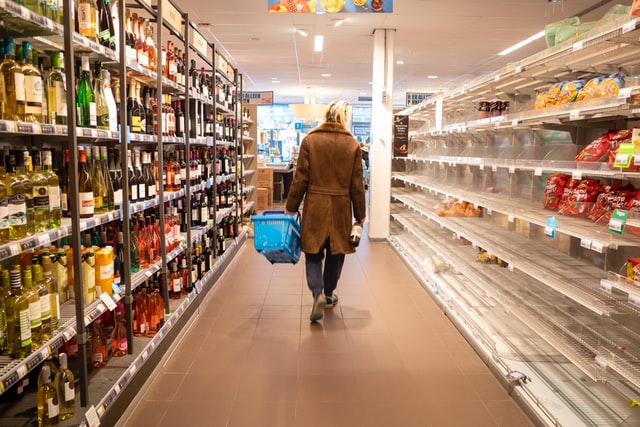HOW DOES THE FOOD RETAIL INDUSTRY TICK?
What you should know about this.
Author: Oliver Merckens
That’s probably what many food manufacturer or service provider asks themselves from time to time. I’ll try to answer this certainly far-reaching question briefly and succinctly:
The grocery retail industry has the responsible task of supplying the population with food on a daily basis. We are talking about approximately 42 million households in Germany (source: destatis.de / 2020) spread across the country with the most diverse requirements. These are influenced by socio-demographic factors (e.g. age, education, household, income), the own lifestyle (e.g. sustainability, vegan, organic, low-fat) or also by intolerances (e.g. gluten, lactose).
SALES FORMATS IN FOOD RETAILING
The food supply in Germany runs with approx. 98% for the consumer predominantly over the stationary retail (source: HDE on-line monitor 2021) with the primary selling formats of the Discounter, supermarkets, specialized markets (pet food, beverage trade, drugstore) and the large surface hypermarket formats with partial over 40,000 articles in the assortment.
In addition, there are certainly the small store, the kiosk, the drinking hall (plus other small formats with different regional names), the corner store and an increasing number of gas stations. To be fair, these only account for a small share of the total volume.
But not every store can offer such a comprehensive assortment as a hypermarket (sales area > 5,000m²). The space available at discounters and supermarkets is significantly smaller (approx. 800 to 2,000m²). The procurement departments select the product range for the stores with a corresponding focus. Optimizing shelf space is therefore part of day-to-day business, and not just from the customer’s point of view.
So much space as in this supermarket is rare
CONTESTED SHELF SPACE IN THE RETAIL SECTOR
Due to the fact that shelf space in grocery retail is limited, a product in the same category must also be delisted at the same time for a listing to occur. New products must “rotate” from day one to compensate for the lost sales (of the delisting). This is where the issue of profitability comes into play.
EDEKA, the REWE Group, the Schwarz Group (Kaufland + Lidl) and ALDI (North + South) combine the largest Grocery Retailing sales share in Germany in 2020 with approx. 75% (source: Lebensmittel Praxis). These Big 4 are not only correspondingly large, but also significant in several respects.
In order to be able to supply the large number of own stores with fresh goods on a daily basis, well-organized and well-rehearsed processes are a prerequisite in the background. As a rule, the customer is unaware of this. It is understandable that “just doing something different” is not easy in complex organizations. In individual cases, a change can be compared to open-heart surgery, since the machinery is constantly running. Day after day and week after week.
We are dealing with other dimensions when it comes to the volumes required for the supply of goods, which poses challenges for many smaller manufacturers. For the top sellers of individual food product groups, the required quantities are not measured in cartons or pallets, but in full trucks, and this per warehouse and delivery.
PRICE IS AN IMPORTANT CRITERION FOR MANY CUSTOMERS
Said Big 4 are in daily competition for the customer to come to one of their stores. For the customer, the following criteria are generally decisive: the proximity or easy and fast accessibility of a store, the range of products on offer to suit their own needs (see above), and the price. Price – the press regularly refers to the “price war” – is still a decisive criterion for many Germans when it comes to selecting a store or individual products. Accordingly, the Big 4 in particular undercut each other in their weekly offers to ensure that customers choose their store for their shopping.
Costumers regularly benefit from this price competition, which has been going on for years, when retailers offer well-known brand products at heavily reduced prices in their advertising. The German, also fondly known as a hunter-gatherer, is pleased when he can reduce his spending on food.
ADDED VALUE THROUGH INNOVATION
So dear food manufacturers, what does this mean for you?
It’s clear that retail has its own issues every day. But don’t worry, food products that are truly innovative and add value for the customer will continue to find their way onto the shelves in the future with the right approach. I’m happy to help you with this.
My tips:
- Familiarize yourself with the different facets of the retail business
(assortments / customers / locations / competition / logistics / etc.).
- Be aware of what you want beforehand and prepare yourself accordingly
(Prepare as you would for a pitch).
- Come up with solutions that fit the customer and the retailer
(He has enough challenges of his own and has therefore limited time).
Conclusion: it’s worth getting to grips with food retailing and gaining an understanding of this business if you want to tap into its huge customer potential.


